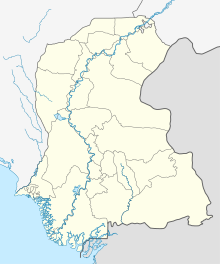|
Battle of Aror
The Battle of Aror took place in 711 AD between the Umayyad forces under Muhammad ibn al-Qasim and the army of the Brahmin dynasty of Sindh under Raja Dahir. It was the last military conflict of Raja Dahir, in which the Umayyads defeated his army near the Indus River and resulted in the death of Dahir. BattleThe battle took place on the left bank of the Indus. The names of that place on those occasions were Jiwar, Bet, and Rawer.[3] After besieging Debal, Muhammad ibn Qasim joined with 2,000 cavalry from Persia in addition to the rest of his forces making it 20,000 men, and marched towards Aror. He was opposed by Raja Dahir's forces. According to the Chach Nama, the strength of the forces was 20,000-25,000. According to modern historians such as K. S. Lal, the forces included not less than 50,000 men.[4][5][6][7] Qasim, seeing the imbalance, took advantage of the ground. He waited for Dahir to attack after getting in a good position. During the battle, a fireball struck Dahir's elephant, and the elephant bore Dahir off the field.[7] Even though Dahir fought, he was killed by an arrow in his neck and his army faced high casualties, resulting in an Umayyad victory.[8][9] AftermathAfter the victory, Muhammed ibn Qasim found the body of Raja Dahir and sent it to Al-Hajjaj. He later dispatched his army to besiege the fort of Rewar.[8] Since his son had retreated to Brahmanabad in war, the queen of Raja Dahir, Rani Bai committed jauhar to avoid being captured by the army of Mohammed Qasim.[6] See Also
References
|
||||||||||||||||||||||||||||


